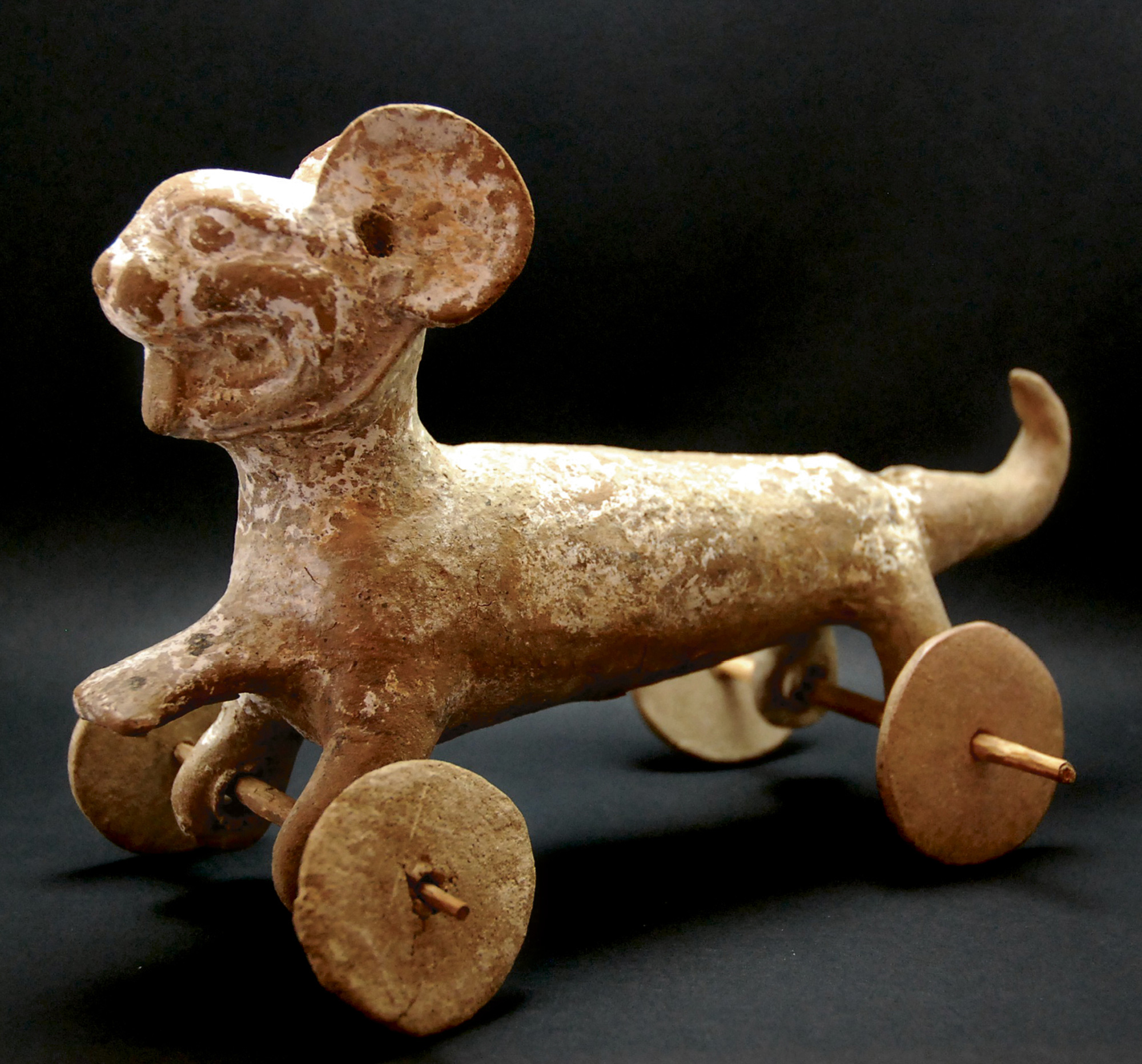Wheeled Animal Effigies in Mesoamerica
A circular puzzle
Cabinet

Archaeologists had long assumed that Mesoamerican civilizations did not use wheeled transportation because they were ignorant of the technology. But this view was challenged in the 1940s with the discovery, around Veracruz in Mexico, by Gordon Ekholm of small figurines of peccaries, armadillos, and horses with wheels instead of legs. Later excavations in Mexico and elsewhere found similarly wheeled cats, dogs, monkeys, crocodiles, iguanas, and jaguars, like the one depicted here.
The question of whether these small sculptures were effigies or toys was the subject of debate; the figurines were no longer being made by the time of the Spanish conquest, and thus the conquistadors had no occasion to see them in use. But contemporary scholars, citing both the evident care with which they were treated and their location in dedicatory caches associated with mound construction, believe that their primary function was ritual. The discovery, of course, also raised the question of why the wheel was never scaled up to be used for transportation. Proposed answers include the lack of draft animals and the rugged landscape.
Richard A. Diehl & Margaret D. Mandeville, “Tula, and wheeled animal effigies in Mesoamerica,” Antiquity, vol. 61, no. 22, July 1987.
Spotted an error? Email us at corrections at cabinetmagazine dot org.
If you’ve enjoyed the free articles that we offer on our site, please consider subscribing to our nonprofit magazine. You get twelve online issues and unlimited access to all our archives.